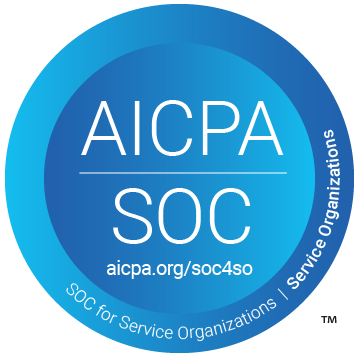What Are Address Lines 1 & 2?
Learn how to format Address Lines 1 and 2 correctly to ensure faster, accurate deliveries and reduce failed shipments with smart address verification.
Get It Right From the First Line: Mastering Address Lines 1 & 2 for Smooth Deliveries
How proper address formatting prevents delays, returns and unhappy customers.
A reliable delivery starts with a clear, complete address. Yet, many businesses underestimate the importance of getting Address Lines 1 and 2 just right. When formatted properly, they guide couriers directly to the doorstep. But when details are missing, deliveries can go astray resulting in delays, returns and extra costs.
This guide unpacks what each Address Line is for, offers real-world examples and shows how smart address validation can keep your deliveries on track.
Why Address Accuracy Matters
In a world of next-day shipping and real-time tracking, customer expectations are higher than ever. A wrong or incomplete address—especially missing apartment numbers or building details—can lead to:
- Failed delivery attempts
- Increased return-to-sender costs
- Poor customer experience
- Loss of trust and repeat business
What Goes in Address Line 1?
Address Line 1 is where the main address components belong. It's the most crucial field for pinpointing a location.
What to include:
- Street number and street name
- Unit, apartment, or suite number (if space permits)
- Sometimes a building or company name
Why it's important:
Couriers use this line to locate the street and specific building. If it's unclear or incomplete, the entire delivery is at risk—even if everything else is accurate.
Examples:
- 123 Main Street
- 456 Oak Avenue, Apt 7B
- XYZ Technologies, Level 4, Tower B
- RR 2 Box 87 (for rural areas)
In business districts or commercial parks, including the company name in line 1 can speed up internal mailroom sorting.
What to Include in Address Line 2
Address Line 2 is optional—but powerful. It provides supporting details that help a courier deliver directly to the right person, room or entrance.
What to include:
- Floor or level numbers
- Building names or identifiers
- "Care of" (c/o) information
- Entry codes or directional notes
- Department or division names
Examples:
- Suite 305
- Level 5, Building D
- c/o Jane Smith
- Gate code 4729
- HR Department
In shared office buildings, apartment complexes, or rural properties, line 2 ensures the package lands in the right hands—not just the right building.
Common Use Cases by Industry
eCommerce & Retail
Customers shopping online often rush through checkout, leading to incomplete address fields. Without a suite or apartment number, deliveries may fail or be delayed. Retailers can use autofill and address validation tools to prompt customers to complete both lines.
Healthcare
Sending sensitive medical items to the wrong location can breach privacy regulations. Clear use of Address Line 2 (e.g. Radiology Dept, Level 3) ensures correct and confidential delivery.
Logistics & Warehousing
Large warehouse sites may have multiple docks or access points. Including "Dock 4, Rear Entrance" in line 2 improves efficiency and avoids misdeliveries.
International Shipping
Address structures vary by country. In Japan, for example, addresses often list the building name and apartment number before the street. Meanwhile, in the UK, it’s common for business names or building names to occupy either line.
Always use country-specific formatting standards—and ensure your systems can capture these nuances correctly.
Global Differences in Address Formatting
When operating internationally, it's important to understand that not all countries follow the same logic as your own.
- United States: Line 1 typically includes the number and street; Line 2 is for optional apartment/suite info.
- United Kingdom: Often includes house name or flat number, followed by street and locality.
- Australia: Line 2 is commonly used for level/floor, especially in urban addresses.
- Germany: Postal codes precede city names, and apartment numbers may be incorporated into line 1.
- Japan: The order is reversed, starting from the largest geographic unit down to the specific recipient.
If you’re using a form to collect international addresses, be sure it supports flexible formatting and doesn’t force users into a rigid, one-size-fits-all structure.
How Address Verification Tools Help
Even with clear form fields, mistakes happen. That’s where address lookup & autocomplete software becomes essential.
These tools check submitted addresses against official postal databases—ensuring accuracy, completeness, and deliverability. They can:
- Correct typos and formatting
- Identify missing apartment or suite numbers
- Standardise addresses for consistency
- Flag invalid or undeliverable entries in real time
Advanced solutions even suggest corrections while the user is typing, improving form completion and reducing frustration.
Bonus for your business:
- Fewer failed deliveries
- Reduced shipping and return costs
- Better customer satisfaction
- Clean, usable contact data for marketing and analysis
Tips to Help Customers Enter Addresses Correctly
To reduce delivery issues, help your customers get it right the first time:
- Label fields clearly:
Use terms like “Street address (Line 1)” and “Apartment, suite, unit, etc. (Line 2)”. - Use inline examples:
Pre-fill or show sample formats like “123 Main Street” or “Suite 205”. - Enable address to autocomplete:
Use tools like Google Places or a postal provider to speed up entry and reduce typos. - Validate in real time:
Don't wait until shipping to discover an error. Flag missing elements before submission. - Support international formats:
For global brands, offer dropdowns that adjust address entry by country.
Final Thoughts
The difference between a successful delivery and a returned package often comes down to a single overlooked field. By helping customers understand how to correctly fill in Address Lines 1 and 2, and by using tools to verify those addresses before they’re used, your business can save time, money and build customer trust.
Whether you’re shipping to a city flat, a rural mailbox, or a high-rise office suite, clear and complete addresses are the secret to getting it right—every time.
Melissa – The Address Experts
As the leader in address verification, Melissa combines decades of experience with unmatched technology and global support to offer solutions that quickly and accurately verify addresses in real-time, at the point of entry. Melissa is a single-source vendor for address management, data hygiene and pre-sorting solutions, empowering businesses all over the world to effectively manage their data quality.
250 +
Countries & Territories
1000555787 +
Addresses Verified
1985
Est.
10000 +
Satisfied Customers Worldwide






